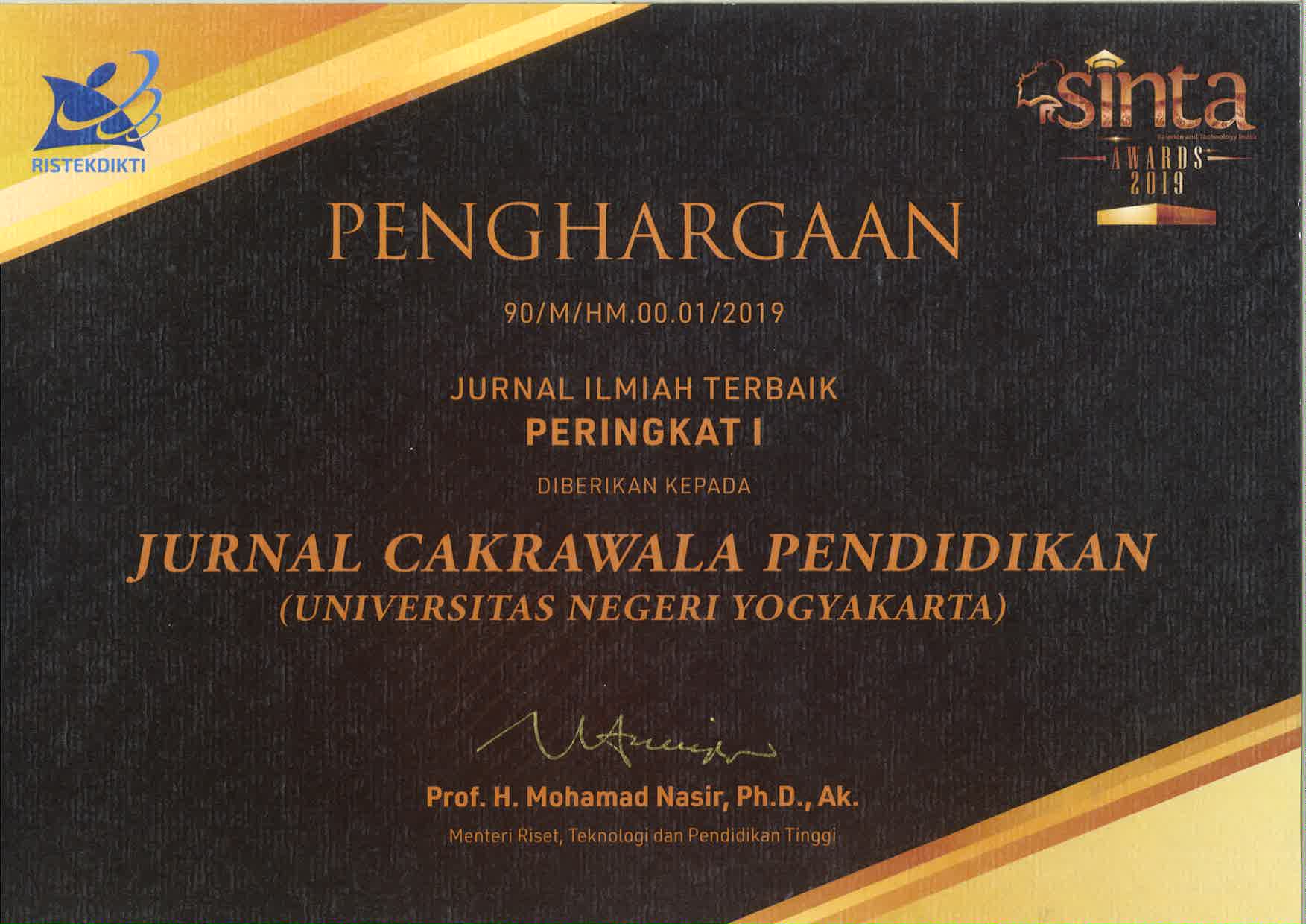Developing a culture-based Indonesian language textbook for non-native speakers for academic purposes
Downloads
Downloads
Baek, Y., Xu, Y., Han, S., & Cho, J. (2015). Exploring effects of intrinsic motivation and prior knowledge on student achievements in game-based learning. The Smart Computing Review, 5(5), 368- 377. doi:10.6029/smartcr.2015.10.001
Bradley, Paula Smith. 2002. The Challenges of teaching Global Citizenship through Secondary Geography.
Byram, M., & Esarte-Sarries, V. (1991). Investigating cultural studies in foreign language teaching: A book for teachers. Clevedon Philadelphia: Multilingual Matters.
Chen, L.L. (2006) Writing Chinese: Reshaping Chinese cultural identity, Gordonsville, VA: Palgrave Macmillan.
Crozet, Chantal and Liddicoat, Anthony. 2000. "Teaching Culture as an Integrated Part of Teaching Language".
Curdt-Christiansen X.L. (2017) Language Socialization through Textbooks. In: Duff P., May S. (eds) Language Socialization. Encyclopedia of Language and Education (3rd ed.). Springer, Cham. https://doi.org/10.1007/978-3-319-02327-4_15-1
Dema, Oxana and Moeller, Aleidine K. 2012. "Teaching Culture in the 21st Century Language Classroom" at http://digitalcommons.unl.edu/teachlearnfacpub.
Dervin, F. (2012). Cultural identity representation and othering. In J. Jackson, The Routledge Handbook of Language and Intercultural Communication (pp. 181- 194). New York: Routledge.
Firdaus. (2013). Indonesian Language Education in Australia: Politics, Policies and Responses. Asian Studies Review, 37(1), 24–41. https://doi.org/10.1080/10357823.2012.760527
Holme, R. (2002). Carrying a baby in the back: Teaching with an awareness of the cultural construction of language. In M. Byram & A. Phipps (Eds.), Context and Culture in Language Teaching and Learning. Clevedon: Multilingual Matters Ltd.
Hutchinson, T., & Torres, E. (1994). The Textbook as Agent of Change. ELT Journal, 48(October), 315–328.
Kramsch, C. (2013). Culture in foreign language teaching. Iranian Journal of Languaeg Teaching Research, 1(1), 57– 78. https://doi.org/10.1590/2176-457333606
Lam, W. S. E. (2009). Multiliteracies on instant messaging in negotiating local, translocal, and transnational affiliations: A case of an adolescent immigrant. Reading research quarterly, 44(4), 377-397.
Liddicoat, A. 2004. "Intercultural language teaching: Principles for practice". at https://www.researchgate.net/publication/281571069
Morgan, C., & Cain, A. (2000). Foreign Language and Culture Learning from a Dialogic Perspective. Clevedon: Multilingual Matters Ltd.
Murtianis, M., Andayani, A., & Rohmadi, M. (2019). Text Book as a Java Culture Recognıtıon Medıa in Indonesıan Learnıng For Foreıgn Speaker (BIPA) in Sebelas Maret University. International Journal of Educational Research Review. 4 (3), 427-434.
Nurlina, L., Andayani, M., Winarni, R., & Slamet, Y. (2018). Teaching Indonesian Communicative Skill Based on Culturefor Foreign Student. In Advances in Social Science,Education and Humanities Research, 5th International Conference on Community Development (AMCA) (Vol. 231, pp. 358–361). Atlantis Press. https://doi.org/10.2991/amca-18.2018.98
Pennycook, A. (2010). Language as a local practice. New York: Routledge.
Richards, J. C., & Schmidt, R. (2010). Longman Dictionary of Language Teaching and Applied Linguistics: Fourth edition. Harlow: Pearson Education Limited.
Saddhono, K. (2016). Teaching Indonesian As Foreign Language: Development Of Instructional Materials based Javanese Culture With Scientific-Thematic Approach. Proceeding The 2nd International Conference on Teacher Training and Education Sebelas Maret University, 2(1), 583–593.
Setyono, B., & Widodo, H. P. (2019). The representation of multicultural values in the Indonesian Ministry of Education and Culture-Endorsed EFL textbook: a Critical discourse analysis. Intercultural Education, 30(4), 383–397. https://doi.org/10.1080/14675986.2019.1548102
Suyitno, I., et. all. (2019). Ho How prior knowledge, prospect, and learning behaviour determine learning outcomes of bipa students? Cakrawala Pendidikan, 38(3), 499-510. DOI: https://doi.org/10.21831/cp.v38i3.27045.
Tran, Thao and Seepho, Sirinthon.2014. "Intercultural Language Teaching in the Context of Vieatnam: A Gap to Be Filled". Research Scholar.
Woo, Y. Y. J., & Simmons, J. A. (2008). Paved with good intentions: Images of textbook development in Afghanistan. Asia Pacific Journal of Education, 28(3), 291–304. https://doi.org/10.1080/02188790802267464
Zuchdi, D. & Nurhadi, N. (2019). Culture based teaching and learning for Indonesian as a foreign language in Yogyakarta. Jurnal Cakrawala Pendidikan, 38(3), 465-476. DOI: https://doi.org/10.21831/cp.v38i3.26297
Jurnal Cakrawala Pendidikan, Jurnal Ilmiah Pendidikan, with ISSN: 0216-1370, is published by the Institute of Education Development and Quality Assurance (LPPMP UNY). Cakrawala Pendidikan has been recently has been re-accredited by Indonesian Ministry of Education and Culture decision Number 230/E/KPT/2022 which is valid for five years since enacted on 30 December 2022.




























